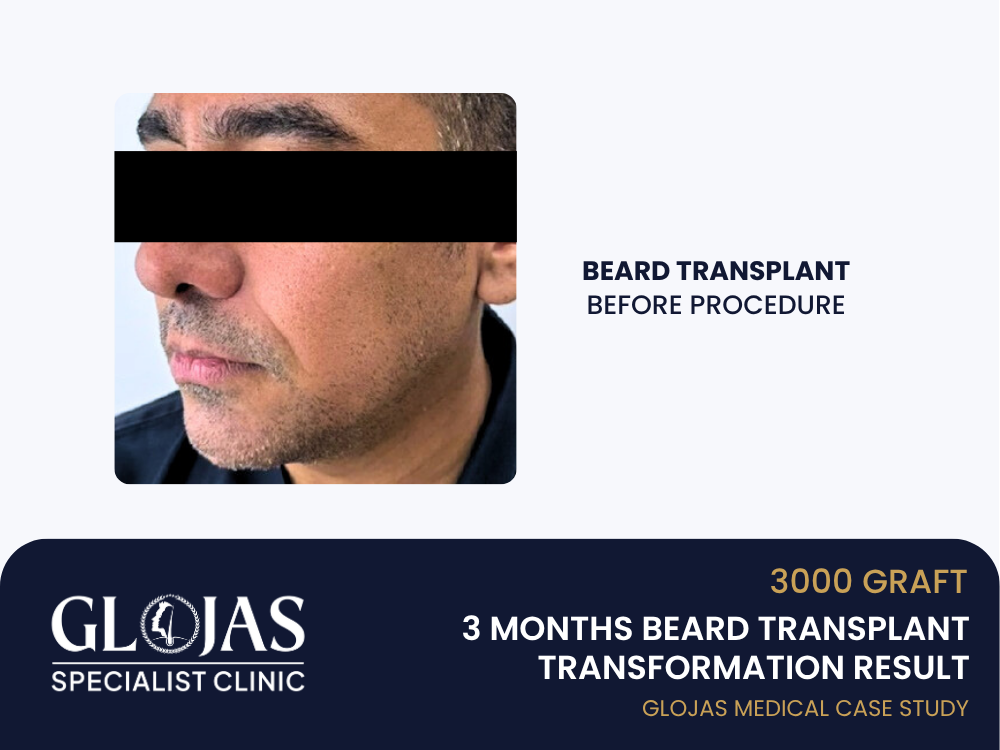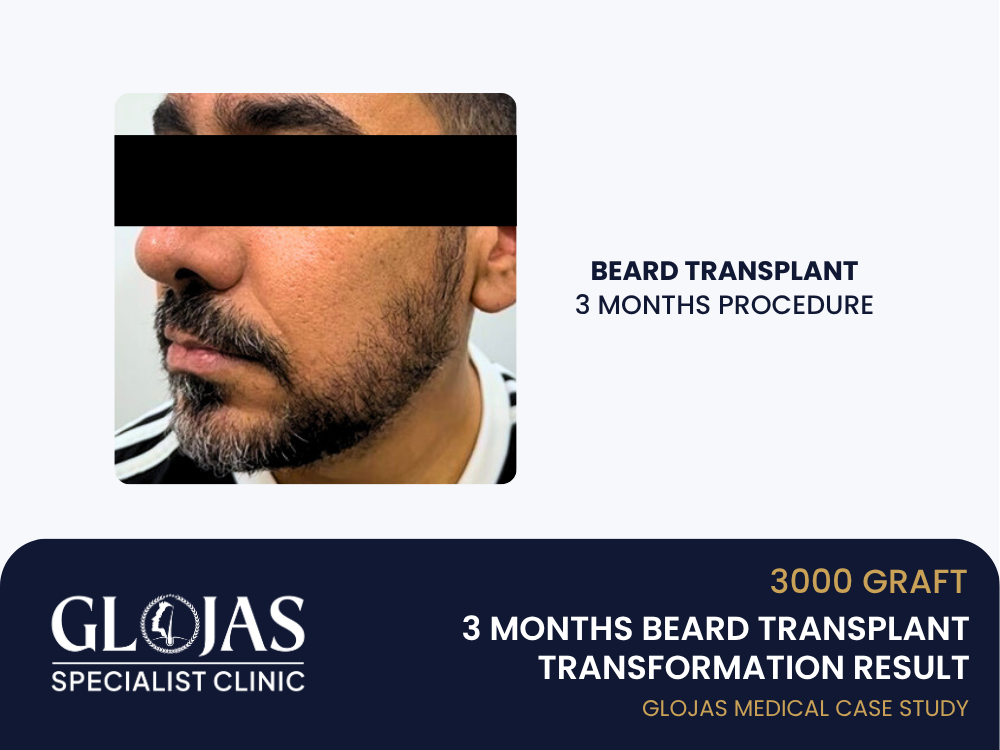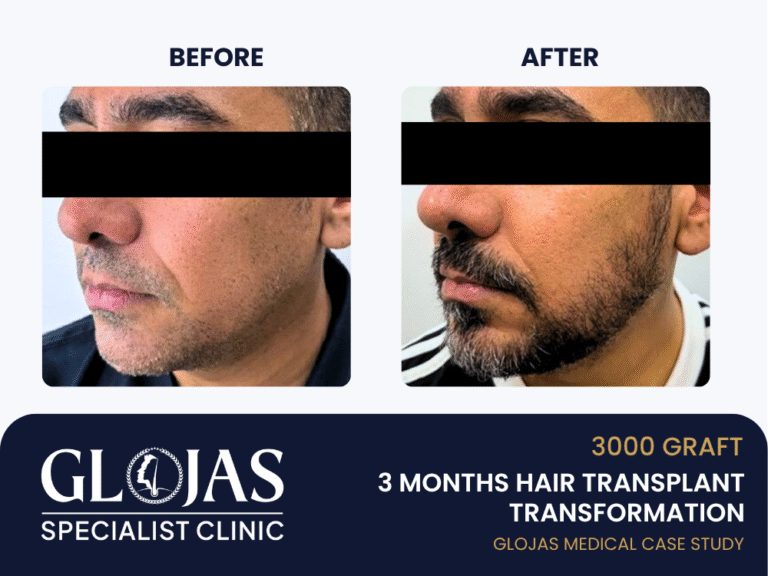Facial hair has become a modern symbol of masculinity and a means of self-expression. However, not all men can grow a full beard due to genetics, scarring, or hormonal issues. For those seek hair transplant malaysia and wanting to achieve a thick, symmetrical, and stylish beard, SMART™ FUE Beard Transplant offers a reliable solution.
In this case study, we follow the journey of a 27-year-old male who underwent a SMART™ FUE Beard Transplant using 3,000 grafts to achieve a full beard look. Just 3 months after the procedure, he has already seen promising early-stage results.
Patient Profile
Age: 27
Concern: Sparse beard, mainly in cheek and jawline areas
Beard Goal: Full, thick beard with defined edges
Donor Area: Occipital region (back of scalp)
Lifestyle: Works in corporate sales, desires a more confident and mature look
Why SMART™ FUE for Beard Transplant?
SMART™ FUE (Scalp Micro Advanced Restoration Technique) is an upgraded version of traditional FUE. It offers:
Micro-punch tools (0.6–0.8 mm) for minimal scarring
Natural direction implantation to replicate authentic beard growth
High survival rate of grafts due to advanced extraction and placement
Ideal for precise facial hair design and dense coverage
For patients like this case, SMART™ FUE was chosen for its precision and natural results.
Consultation & Planning
During the initial consultation, the patient requested a full beard that connects smoothly from sideburns down to the chin and around the jawline, including the moustache and underlip area. He desired a modern look with a slight fade into the cheeks and clean neckline.
Assessment:
Minimal natural beard growth on cheeks
Sparse coverage under the chin
Strong donor hair availability at the back of the head
No history of skin issues or keloids
Design Objectives:
Fill cheeks and jawline with medium-to-high density
Define edges to shape a full beard
Smooth connection with moustache and goatee
Natural density gradient from sideburns downward
Procedure Details

Technique Used: SMART™ FUE Beard Transplant
Grafts Implanted: 3,000
Duration: Approx. 8 hours (single-day procedure)
Anesthesia: Local anesthesia
Tools Used: Microsurgical punches, implant pens
Step-by-Step Process:
Donor hair trimmed and cleaned
Grafts harvested using a micro-punch tool
Grafts sorted and grouped (singles, doubles) for strategic placement
Beard design marked on the face
Grafts are implanted into the cheeks, chin, jawline, moustache, and lower lip area
Recovery & Healing Timeline

The patient was advised post-op on recovery, which followed a smooth trajectory.
| Timeline | Progress |
|---|---|
| Day 1–3 | Mild swelling and redness on the face |
| Day 5–7 | Formation of small scabs at graft sites |
| Week 2 | “Shock loss” phase (temporary hair shedding) begins |
| Week 4–6 | Redness fades, new hair starts emerging slowly |
| Month 3 | Early visible growth in beard outline and density |
3-Month Results

At the 3-month mark, the patient had already developed a visible beard frame and was excited about the direction of growth. Although density was not yet final, the shape was well-defined and filling in steadily.
| Before | After 3 Months |
|---|---|
| Sparse beard with patchy cheeks | Beard outline is visible with new hair filling gaps |
| Minimal jawline definition | Jawline beard is forming a more structured profile |
| Uneven moustache connection | Moustache starting to connect naturally with beard |
The patient was able to do light trimming to maintain the shape while allowing natural growth.
Patient Feedback
“I’ve never had a real beard before, just patches. In 3 months, I finally have a beard I can style. It’s not fully thick yet, but I can see where it’s going — and I love it.”
Aftercare Instructions
Avoid shaving for at least 3 weeks post-procedure
Use antiseptic cleanser and moisturizers regularly
Avoid direct sun exposure for the first month
Optional PRP booster session at month 3–4
Begin light trimming after 8–10 weeks
5 Frequently Asked Questions (FAQ)
1. Is 3,000 grafts enough for a full beard?
Yes, 3,000 grafts are generally sufficient for moderate to dense beard reconstruction, especially if the patient has some existing natural growth.
2. When will I see the final results?
Full results typically appear between 9 and 12 months. At 3 months, you will see the structure and shape forming, with increasing density over time.
3. Will the new beard look natural?
Absolutely. With SMART™ FUE, grafts are implanted at natural angles and directions to mimic real beard growth, making the results indistinguishable from natural hair.
4. Is the beard permanent?
Yes. The transplanted follicles are taken from scalp areas resistant to hair loss and will grow permanently like natural facial hair.
5. Can I style and shave my beard after the procedure?
Yes. After 2–3 months, patients can begin light trimming, and by 4 months onwards, most can style or shape their beard as desired.
Final Thoughts
This case proves that SMART™ FUE Beard Transplant is a reliable and transformative solution for men struggling with sparse or patchy facial hair. With a carefully planned design, skilled graft placement, and proper aftercare, it’s possible to go from a minimal beard to a well-framed, masculine look.
The 3-month progress is already impressive — and with continued growth expected over the next 6–9 months, the patient is on track for a fully developed, natural-looking beard.
If you’re ready to invest in your confidence and appearance, SMART™ FUE could be the full-beard solution you’ve been searching for.
